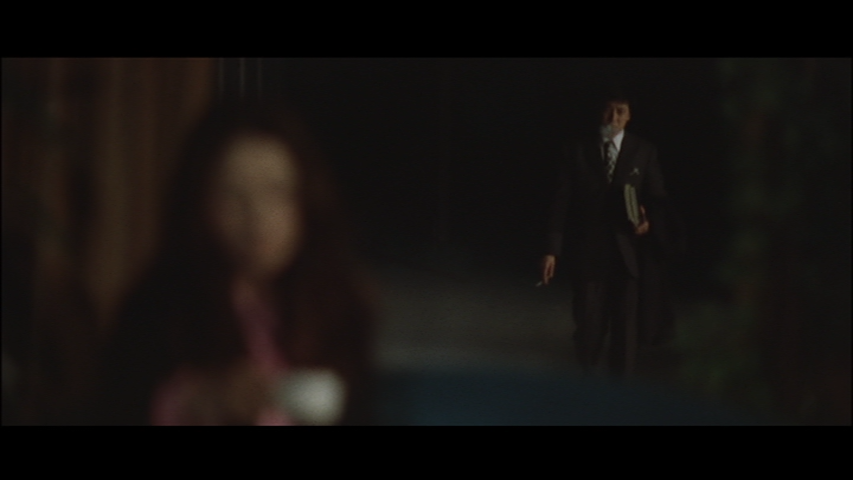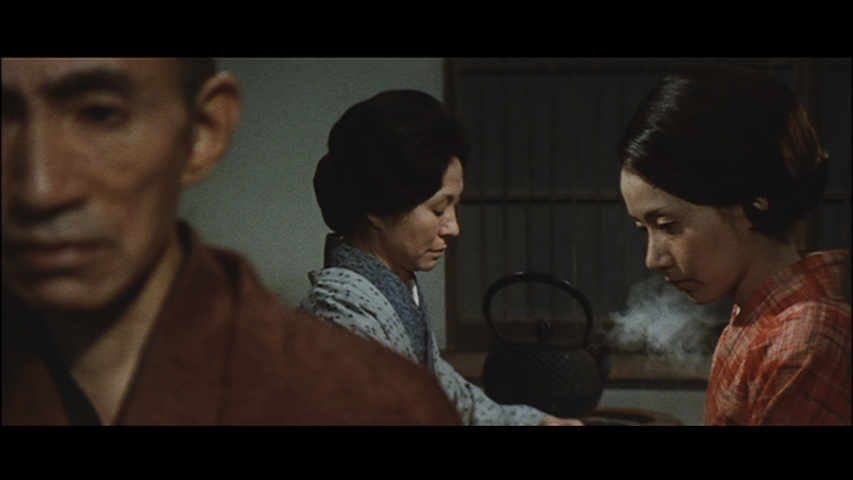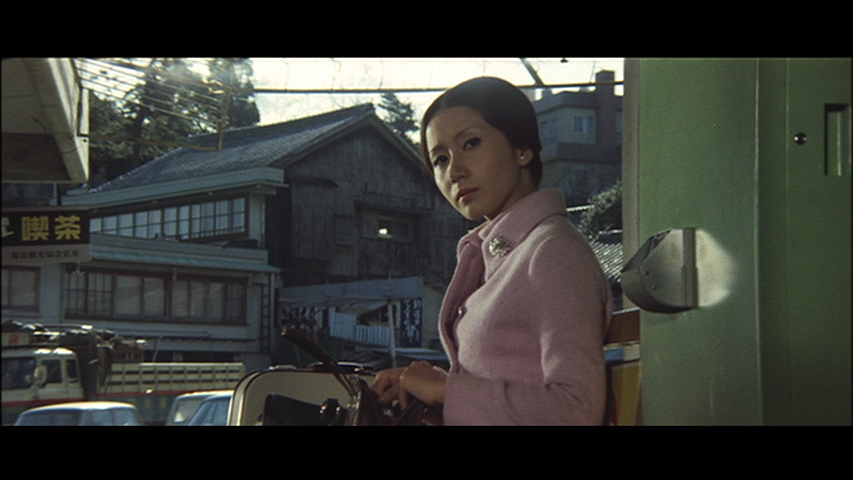Last Updated on October 6, 2020 by rob
An adulterous affair between Minako (Shima Iwashita), the wife of a rich but much older husband who can no longer satisfy her physically, and Shozo (Akira Nakao), a young archaeology scholar married to his teacher’s daughter, reaches breaking point when it becomes apparent that while Minako is quite willing to leave her husband, Shozo values his work and career far more. As they spend their final day together a succession of incidents bedevil the pair and prompt Shozo into planning Minako’s murder by pushing her off a cliff.
Director Saito’s excellent mordant drama tracks the development and eventual disintegration of an adulterous affair and although Shadow of Deception is bookended by the discovery of a woman’s body whose identity is concealed from us until the climax (not that it’s difficult to guess who the victim is) this is a film of shifting moods rather than plot twists, of emotional nuance and texture over melodrama. Saito began his career as a stills photographer at Nikkatsu and his photographer’s eye – aided by Hiroshi Takemura’s wonderful cinematography and Katsuhisa Hattori’s simple, wistful score – is well in evidence here. The beautiful seaside town with its little inlets and islands in which the affair is conducted are splendidly set up as both foreshadowing and counterpoint. Saito makes a point of emphasising reflections whether in windows or the water, underlining the double life these characters are leading.
And Saito is clearly fascinated the idea of the personal guilt that these characters carry around and which is in constant threat of exposure and shame by the outside world. The result is intensely absorbing. In one scene Minako nearly falls to her death from an islet, a fate she tells Shozo she’s always believed in. When Shozo’s dig uncovers the skeleton of a young woman who appears to have been the centuries old victim of a love triangle Minako wonders out loud to Shozo what it would be like to be killed by your own lover. In these and other respects you get the sense of a destiny written, as if Minako in some vague half-sensed way already knows what’s going to happen. In a number of ways the film plays almost as a dress rehearsal for Saito’s follow up The Rendezvous (1972).
Like that later film this too focuses on two characters whose personal feelings are in tremendous conflict with the outside world and it also utilises the framing device of kicking the story off from a point in the present time before flashing back to explain how such events (a dead body in Shadow, a woman waiting alone on a park bench in Rendezvous) came about. Both films are dominated by their female leads. In the sublime The Rendezvous, Saito got a brilliantly nuanced performance from Keiko Kishi as a murderess on parole. Shima Iwashita isn’t quite in Keiko’s league but she’s a very fine actress and one of my favourite moments here is down to her where she watches Shozo on the phone making excuses to his family and in that moment she realises – and we realise – that the affair has run its course. There’s no dialogue, no histrionics, just a barely perceptible flicker of expression on Iwashita’s face, but it’s enough to tell us all we need to know.
The climax proves wonderfully ambiguous. Minako does indeed fall from a cliff but only after Shozo tries to push her but can’t because his nerve fails him. So he flees in panic and as Minako pulls herself together, she hears a noise, turns and sees… something. There’s a scream and she falls to her death … but what it was, who it was, is left up to us to decide. Could it have been the housemaid? Minako’s husband perhaps? Any of these are possible but my own take is that it was in a way simply the destiny that Minako herself had always foreseen rushing to meet her. I agree that might seem rather pretentious but the film has the kind of dreamy, fatalistic quality that makes such an interpretation possible. In the blackest joke of all Shozo doesn’t escape either, condemned by one of his own coat buttons the police discover clutched in the dead woman’s hand.



